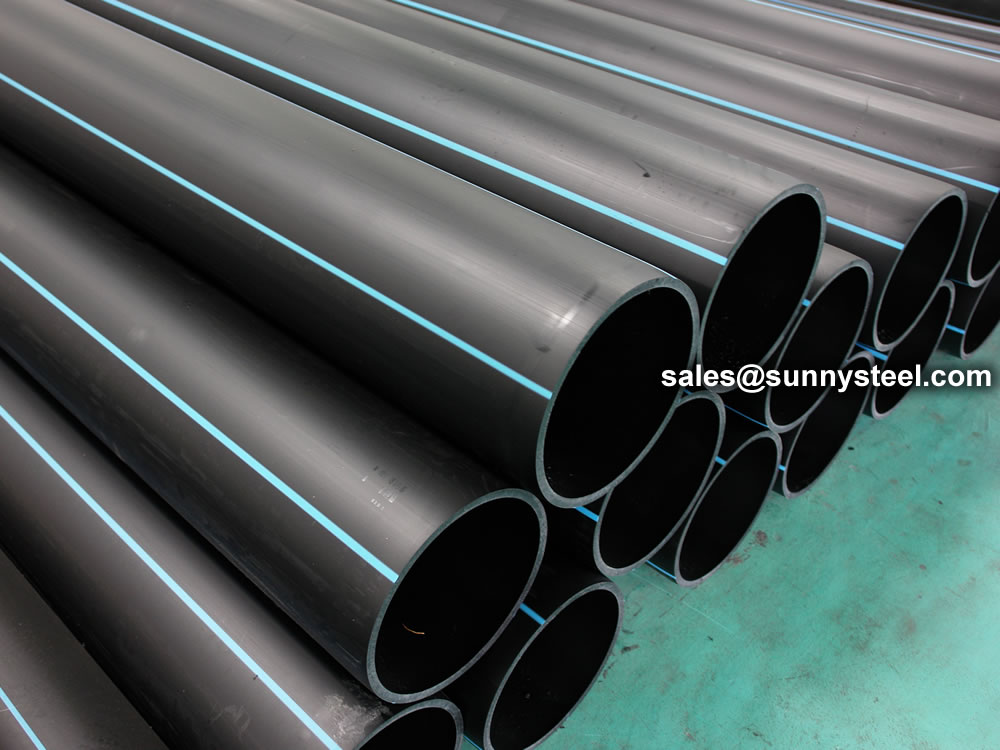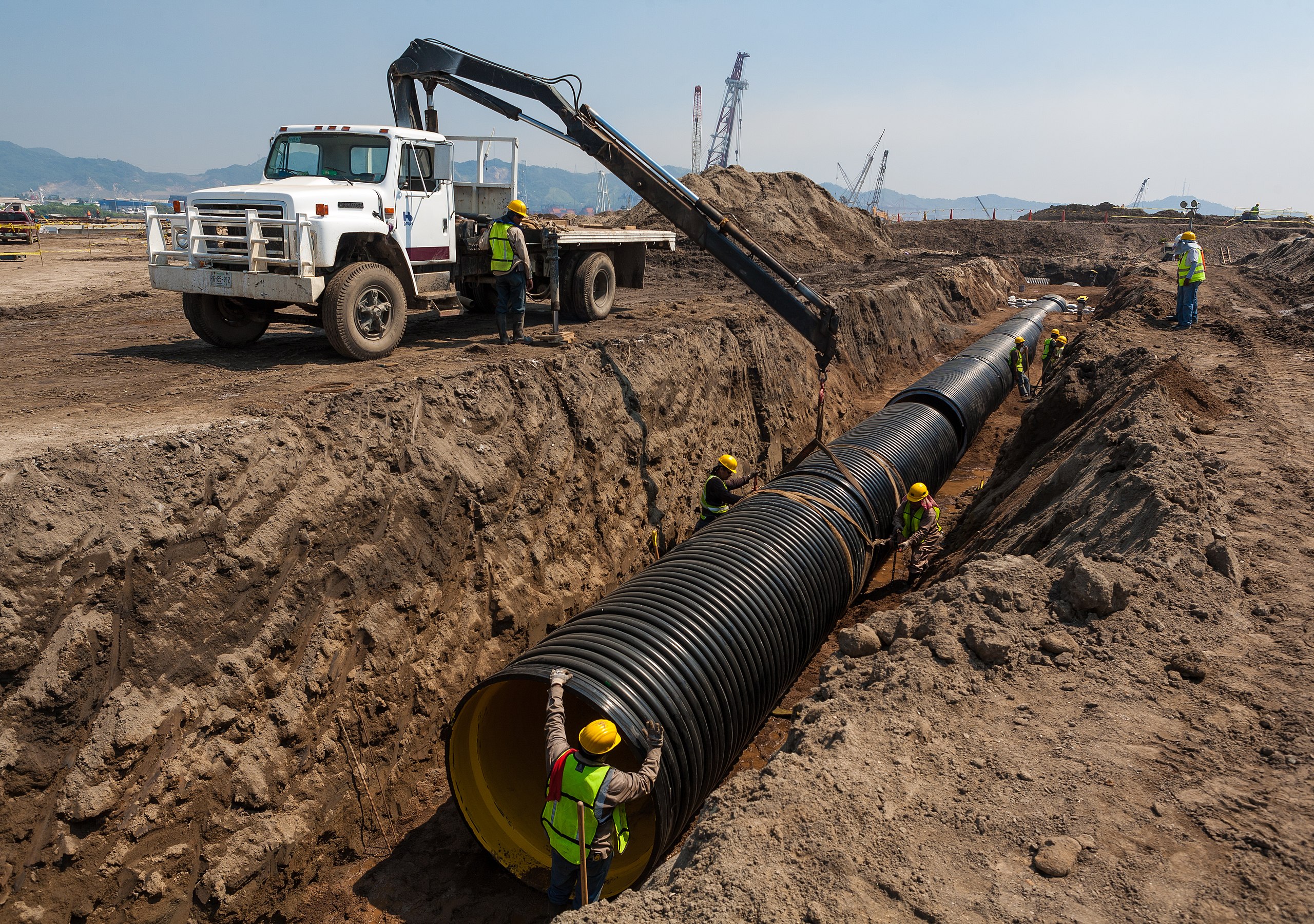FAQs About Texas hdpe pipe manufacturer and Their Process
Wiki Article
Explore the Production Refine Behind High-Quality HDPE Pipeline and Its Applications
The manufacturing process of high-grade HDPE pipelines is complex and systematic. It starts with the option of basic materials that boost efficiency. Following this, ethylene undergoes polymerization to develop material, which is then shaped through extrusion. Quality assurance is paramount, making certain that the end product satisfies stringent standards. Nonetheless, the trip of HDPE pipelines doesn't finish with manufacturing. Their applications across various industries disclose a broader significance worth analyzing.Understanding HDPE: Qualities and Advantages

High-density polyethylene (HDPE) is a flexible polycarbonate understood for its resilience and resistance to different environmental factors. This product displays excellent tensile toughness, making it ideal for requiring applications. Its low-density framework contributes to a light-weight product, assisting in simplicity of handling and installation. HDPE additionally showcases remarkable resistance to chemicals, which decreases degradation when exposed to rough compounds.
The product's reduced dampness absorption even more improves its durability, making it optimal for use in pipes and storage space containers. In addition, HDPE is resistant to ultraviolet (UV) radiation, making certain that items maintain their integrity even when subjected to sunshine. Its flexibility permits for the creation of detailed forms without endangering strength. The environment-friendly nature of HDPE, often obtained from recycled products, includes in its appeal, advertising sustainable practices in production. In general, these properties and benefits make HDPE a favored selection for different commercial and consumer applications.
Resources Selection for HDPE Manufacturing
The selection of raw materials for HDPE manufacturing is necessary to verify the end product meets the wanted requirements and quality standards. High-density polyethylene (HDPE) is largely produced from polymerized ethylene, stemmed from fossil fuels such as gas or crude oil. The top quality of these feedstocks substantially influences the mechanical and thermal residential or commercial properties of the final HDPE.Ingredients also play a significant role in boosting HDPE's efficiency, consisting of anti-oxidants, UV stabilizers, and colorants, which enhance longevity and resistance to environmental elements. The choice process must take into consideration not just the chemical composition of the raw products but additionally their processing qualities to guarantee reliable manufacturing.
Moreover, the sourcing of resources need to focus on sustainability and compliance with environmental guidelines, as accountable techniques are essential in today's market. Ultimately, mindful raw product selection lays the structure for generating premium HDPE pipelines ideal for varied applications.
The Extrusion Process: Forming HDPE Pipeline
The extrusion procedure plays an important function in shaping HDPE pipes, starting with thorough product prep work techniques that guarantee excellent flow and uniformity. Similarly important is the layout of the die, which directly influences the final dimensions and surface top quality of the pipeline. With each other, these factors add significantly to the effectiveness and quality of HDPE pipe manufacturing.Material Preparation Methods
Reliable manufacturing of HDPE pipelines begins with precise product prep work strategies, particularly the extrusion process. Throughout this phase, high-density polyethylene material is initial dried out to eliminate wetness, ensuring suitable circulation attributes. The resin is then fed right into the extruder, where it undergoes heating and melting, changing right into a viscous state. This home heating process is meticulously controlled to keep the material's honesty and efficiency. The molten HDPE is compelled through a die, forming it right into a continuous pipe type. Correct temperature level management throughout extrusion is essential, as it straight influences the material's buildings and the last product top quality. When formed, the HDPE pipeline is cooled down and reduced to specified sizes, all set for subsequent processing and applications.Die Design Relevance
Accuracy in die layout plays a crucial duty in the extrusion procedure of HDPE pipes. The die works as the final shaping device, straight affecting the pipe's measurements, wall density, and surface area finish. A well-designed die guarantees consistent material circulation, reducing flaws such as irregularities and weak places. The geometry of the die have to be maximized to accommodate the particular residential properties of HDPE, including its viscosity and thermal actions throughout extrusion. Furthermore, the cooling price of the material as it passes via the die can considerably impact the pipeline's structural honesty. Spending in advanced die modern technology is crucial for suppliers aiming to produce high-grade HDPE pipes that meet industry criteria and customer assumptions.Quality Assurance Measures in HDPE Manufacturing
Although different elements influence the high quality of HDPE pipeline manufacturing, efficient quality assurance steps are crucial to guarantee uniformity and reliability in the end product. Trick quality assurance practices consist of extensive product assessment, verifying that the raw polyethylene satisfies recognized standards for pureness and thickness. Throughout the extrusion procedure, specifications such as temperature level, stress, and cooling time are very closely kept track of to keep dimensional accuracy and architectural integrityAdditionally, post-production screening is necessary; manufacturers usually perform hydrostatic examinations to examine the pipeline's toughness and resistance to stress. Aesthetic assessments for surface defects further enhance quality assurance. Certification from relevant criteria organizations, like ASTM or ISO, offers an extra layer of credibility. By executing these comprehensive quality control measures, suppliers can lessen flaws, improve performance, and ensure that the HDPE pipelines fulfill the specific requirements of different applications, inevitably bring about client complete satisfaction and count on the product.
Applications of HDPE Pipe Throughout Industries
HDPE pipes are utilized throughout various markets due to their resilience and versatility. In water circulation systems, they assure effective delivery, while in wastewater monitoring, they offer reliable options for waste transportation. In addition, agricultural irrigation networks gain from HDPE's resistance to deterioration and adaptability, making it an ideal choice for modern-day farming practices._-_Post_di_Facebook_-_Dimensioni_personalizzate_(1)_60cafdf20856f.png)
Water Circulation Equipments
A substantial variety of industries count on high-density polyethylene (HDPE) pipes for reliable water distribution systems. Understood for their durability and resistance to rust, HDPE pipes are extensively made use of in municipal water system networks, agricultural watering, and industrial applications. Their lightweight nature promotes very easy handling and installation, decreasing labor costs and time. In addition, HDPE pipelines can accommodate numerous stress levels, making them suitable for both reduced and high-pressure systems. hdpe pipe fittings Midland TX. The versatility of the product permits seamless assimilation into existing framework, reducing the requirement for comprehensive excavation. HDPE's resistance to chemical seeping assurances that the water delivered remains risk-free and tidy, making it an excellent choice for maintaining the high quality of safe and clean water throughout different markets.Wastewater Administration Solutions
Effective water circulation systems additionally lead the way for innovative wastewater management remedies, where high-density polyethylene (HDPE) pipelines play a considerable function. Renowned for their longevity and resistance to deterioration, HDPE pipelines are excellent for carrying wastewater in various settings. Their flexibility enables for easy setup in complex atmospheres, lessening the demand for substantial excavation. Additionally, HDPE's smooth indoor surface area lowers friction, improving circulation rates and performance. These pipelines are additionally immune to chemical leaching, ensuring that contaminants do not endanger the surrounding atmosphere. Industries, municipalities, and therapy centers significantly depend on HDPE pipelines for their reliability and longevity, making them a favored option for modern wastewater management systems. This adaptability emphasizes the important value of HDPE pipes throughout various applications.Agricultural Watering Networks
Agricultural irrigation networks profit substantially from making use of high-density polyethylene (HDPE) pipes, which offer effective and trusted water distribution to crops. HDPE pipes are lightweight, making them very easy to transfer and set up, while their flexibility enables different arrangements in diverse surfaces. These pipes show superb resistance to deterioration, chemicals, and UV radiation, ensuring longevity in rough agricultural atmospheres. In addition, their smooth indoor surface area minimizes friction loss, maximizing water circulation and lowering energy costs related to pumping. The longevity of HDPE pipelines, commonly going beyond 50 years, adds to decrease upkeep and replacement expenses. Farmers increasingly depend on HDPE pipelines to enhance watering efficiency and promote sustainable agricultural practices, inevitably leading to boosted crop returns and source conservation. sewer line camera inspection
Future Trends in HDPE Pipeline Innovation
As the demand for sustainable and efficient framework grows, developments in HDPE pipe innovation are poised to change various sectors. Arising patterns consist of the integration of wise technologies, such as sensing units and IoT capacities, which promote real-time monitoring of pipeline conditions, minimizing upkeep expenses and avoiding leaks. Furthermore, the growth of innovative manufacturing techniques, such as 3D printing, is making it possible for the manufacturing of facility, tailored pipe designs that provide to certain project requirements.Additionally, the concentrate on recycling and round economic situation techniques is driving the advancement of HDPE pipelines made from recycled products, improving sustainability. Enhanced jointing approaches, such as electro-fusion and mechanical installations, are also boosting installment performance and reliability. The expanding emphasis on ecological guidelines is pressing makers to adopt greener production processes, making certain that HDPE pipes not just fulfill market requirements yet likewise promote an even more sustainable future for framework advancement.
Regularly Asked Questions
How Does HDPE Contrast to Various Other Plastic Materials?
HDPE outmatches lots of various other plastic materials regarding sturdiness, chemical resistance, and flexibility. Its reduced thickness and high tensile toughness make it optimal for various applications, typically exceeding options in both efficiency and durability.What Are the Ecological Impacts of HDPE Production?
The environmental impacts of HDPE manufacturing consist of greenhouse gas discharges, power consumption, and potential air pollution from producing processes. Furthermore, improper disposal can cause soil and water contamination, elevating worries concerning long-lasting eco-friendly results.Can HDPE Piping Be Reused?
Yes, HDPE pipes can be recycled. Several facilities approve utilized HDPE for processing, transforming it into brand-new items. This recycling contributes to sustainability efforts, lowering plastic waste while conserving resources and power in the production cycle.What Is the Lifespan of HDPE Piping?

How Do Temperature Variations Influence HDPE Pipe Efficiency?
Temperature level variants greatly affect HDPE pipe performance, affecting versatility and toughness. High temperature levels can cause softening, while reduced temperature levels may trigger brittleness, inevitably affecting the pipeline's toughness and viability for various applications in diverse environments.Report this wiki page